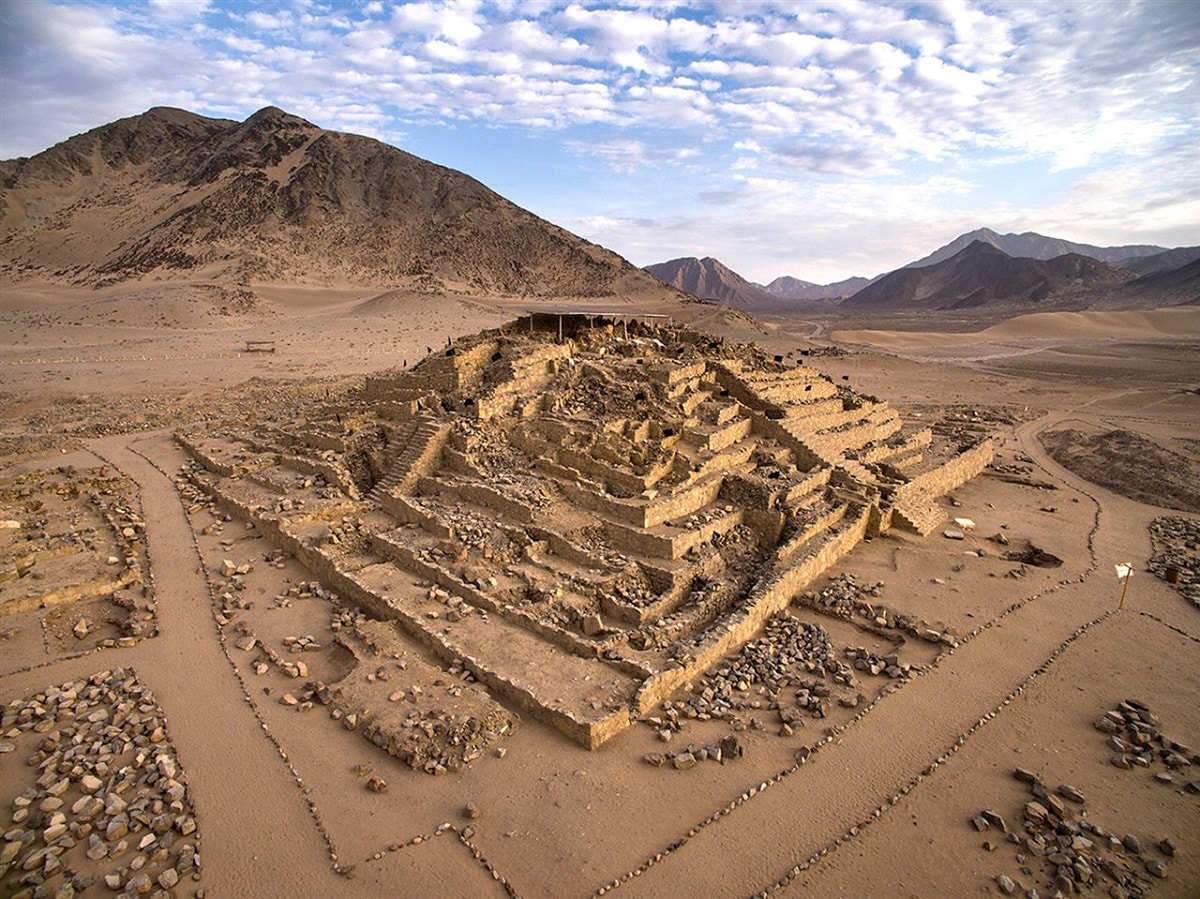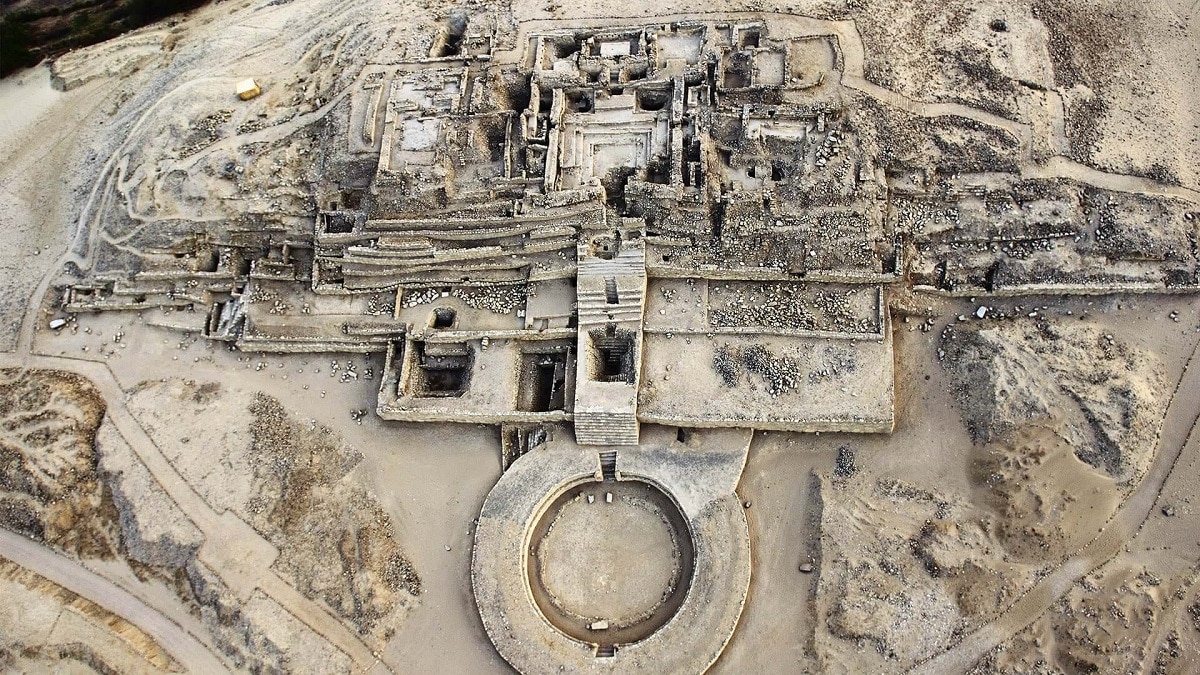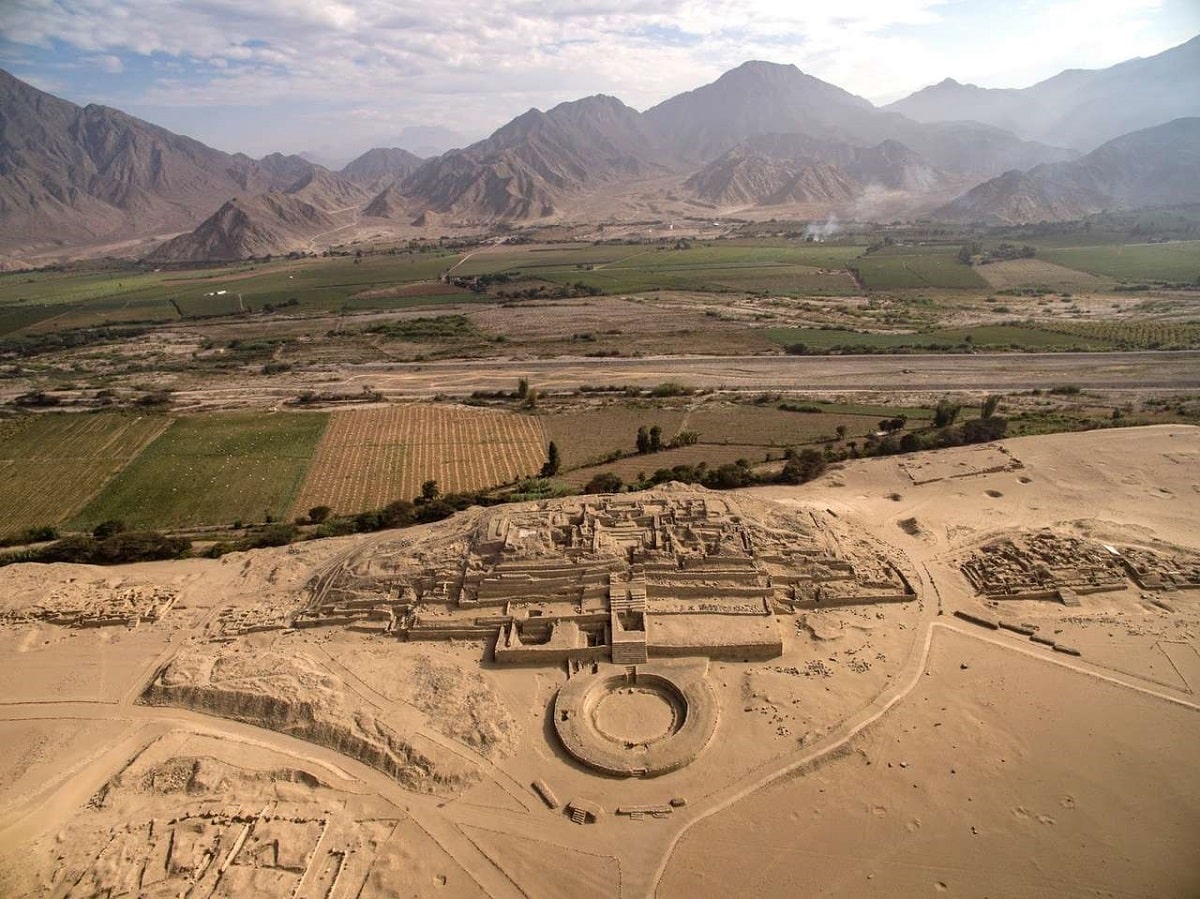
In Peru there is one of the most important but little-known cultures of the American continent. Is about Caral, the oldest city in the American continent, which is now celebrating the 25th anniversary of its excavations. Numerous archaeological sites have been found in this city that contain a large amount of information about the history of the human being.
For this reason, we are going to dedicate this article to telling you everything you need to know about Caral, the oldest city in the American continent, its characteristics and discoveries.
Caral, the oldest city in the American continent

In Caral, the busiest city on the American continent, there are many 66-hectare sites in the Valle Supere on the north-central coast of Peru. It is one of the greatest civilizations in America, and the civilization that built it, the Caral culture, It is considered the oldest civilization on the American continent.
The economy of the Caral is based on agriculture and fishing in the so-called port of Supe on the Pacific coast. In this region, small settlements began to develop rapidly between 3000 B.C. C. and 2700 a. C., and these settlements interacted and exchanged products among themselves and even with other more distant populations. more complex societies were formed between 2700 and 2550 BC the great city of Caral was built, a place of monumental architecture. It was at this time that new urban centers began to appear in the Super Valley and the adjacent Pativelka Valley, between 2550 and 2400 BC. The influence of the Caral culture reached northern Peru, from Ventarrón, Lambayeque or other places in the south as shown on the site, such as the valleys of Chillón, Rímac, Asia…
improved ability

The Carals were an advanced society that developed great scientific and technological knowledge and transmitted this knowledge to other neighboring cultures. They do not live in walled cities or make weapons, but they do trade resources, goods, and knowledge with mountain and jungle dwellers. Likewise, they came into contact with Spondylus, a mollusk typical of the tropical waters of Ecuador, which played an important role in Andean societies, they also acquired sodalite, a mineral from Bolivia that even reproduced the new Chilean species by burying the children. The dead were manipulated in the Cuervo culture suggests that the Caral were related to other cultures that were geographically distant.
The importance of Caral, the oldest city in the American continent, is reflected in its architectural elements, which are symbolic -and in turn embraced by other cultures-: sunken circular plazas, niches, double-column doors, anti-seismic technology, stepped platforms. It is an urban complex made up of different buildings. It does not have a fenced area and is located on a terrace that protects it from possible natural disasters.
The city of Caral does not have a walled enclosure and is located on a platform that protects it from natural disasters. Six pyramids survive, each with a central stairway and an altar with a central fire. The buildings were built with stone and wood from fallen trees. Six pyramids have survived, each with a central stairway facing a particular star. All these buildings had an altar with a fire in the center (circular or quadrilateral) and underground pipes to channel the energy of the wind. Religious ceremonies will take place in these complexes, including the burning of offerings to the gods. But some of the most striking structures are its two enigmatic circular plazas, in front of two pyramid-shaped buildings. Most likely also related to religious ceremonies.
ecological disaster

Archaeologists have worked in 12 settlements of this culture with the aim of understanding the social system of the Caral civilization and how it changed over the millennia, achieving great prestige and development until it entered into crisis and collapsed due to dramatic climate change. , which turned the prolific Supe Valley into land of dunes and sand, impacted by prolonged droughts, conditions that led to the abandonment of urban centers. Change, the effects of which have been catastrophic. Archaeologists have identified a series of extreme weather events, including earthquakes and torrential rains that flooded the bay of the fishing village.
There was also an extreme drought that lasted for decades: the Supe River dried up and the fields filled with sand. Finally, after putting an end to the various and devastating famines of this glorious civilization, Caral and the surrounding towns They were abandoned around 1900 BC, without knowing what happened to their inhabitants.
Monuments of Caral, the oldest city in the American continent
Between the years 3000 and 2500 BC, the inhabitants of Caral began to form small settlements in what is now the province of Barranca, communicating with each other and exchanging products and merchandise. It was there that the construction of the new great center of the city began, in which important circular plazas and pyramidal public walls were built that served as ceremonial centers. In these complexes, people worshiped the gods and burned offerings as a token of appreciation.
During their existence, this culture built ditches, the remains of which show how they used the climate and water resources. Through these constructions they manage to direct the wind so that the water flows to the lowest point and can be used for household chores.
Reap this natural benefit It is one of the most important tasks of daily life.. Puquios (“springs” in Quechua) were built in different areas of the valley as reservoirs for water management.
Caral's economy is based on fishing and agriculture. According to the survey, they traded cotton and dehydrated fish with other Andean and Amazonian societies. Barter trade was carried out with other less developed cultures that inhabited the Andean region.
Another characteristic of Caral was his extensive knowledge of science and technology, which was transferred to other neighboring cultures. This development is manifested in the creation of new agricultural techniques, such as the aforementioned ditches. Likewise, there is evidence that this civilization may have organized an army that made its own weapons.
I hope that with this information you can learn more about Caral, the oldest city in the American continent.